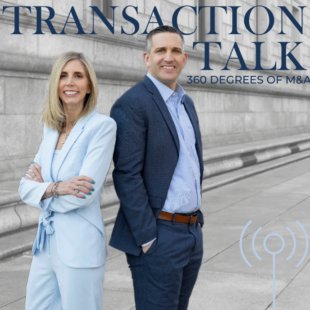On June 21, 2022, President Biden signed S. 3823, also known as the “Bankruptcy Threshold Adjustment and Technical Corrections Act” into law, amending the Small Business Reorganization Act of 2019 (the “SBRA”) to increase the eligibility debt cap for businesses filing under subchapter V of chapter 11 of the Bankruptcy Code (“Subchapter V”) from $2,725,625.00 of noncontingent liquidated debt to $7,500,000.00 of noncontingent liquidated debt. Significantly, the $7.5 million cap excludes all debts owed to one or more insiders or affiliates – so intercompany and shareholder loans are not included. Likewise, debts which do not have a fixed number (i.e., not liquidated) or which are dependent upon events which have not yet occurred (i.e., contingent), are also excluded from the eligibility calculation.
By essentially tripling the debt cap to $7.5 million, Subchapter V now provides small business debtors with a streamlined process that actually addresses the barriers that have effectively barred sophisticated mid-market businesses from traditional chapter 11 reorganization, specifically its expense, risk of personal liability to officers and other insiders, and hostility to the continuity of equity. Compared to a traditional chapter 11 process, Subchapter V has significant benefits to potential debtors, including but not limited to the following:
1. Streamlined. Subchapter V cases are designed to be faster than traditional chapter 11s. Under Subchapter V, a debtor is required to file a plan of reorganization within 90-days of the start of the case. A Subchapter V plan of reorganization does not require a separate disclosure statement to be approved by the court. Subchapter V cases have a lower threshold for plan confirmation compared to traditional chapter 11 cases. In a traditional chapter 11 case, a debtor’s plan cannot be confirmed unless at least one class of creditors whose rights are “impaired” under the plan votes to accept the plan. Comparatively, a Subchapter V plan of reorganization can be confirmed through the “cram down” process even if all impaired classes of creditors vote against the plan.
2. Expense. Subchapter V cases are more affordable than traditional chapter 11s for a number of reasons. First, tighter timeframes for confirmation mean less time in which a Debtor can incur legal fees. Second, the disclosure requirements in Subchapter V cases are somewhat relaxed compared to a traditional chapter 11, which depending on the nature of the business, may reduce the need to engage an outside accounting firm in the bankruptcy case. Third, Subchapter V cases do not have a committee of unsecured creditors. In a traditional chapter 11 case, a committee of unsecured creditors is appointed by the United States Trustee. The committee may then employ its own professionals, and typically does so at the Debtor or lender’s expense. Finally, the administrative expenses of a Subchapter V case may be paid over a period of three to five years. Comparatively, in a traditional chapter 11 case, all administrative expenses must be paid upon the effective date of the plan– unless the administrative claimant agrees otherwise- or the plan may not be confirmed. This is typically a high upfront cost for small businesses with struggling cash flows and Subchapter V’s flexibility will likely result in more confirmable cases.
3. Risk to Officers and Other Insiders. In a Subchapter V case, the role of the committee is replaced by a standing Subchapter V trustee. A creditors’ committee is charged with representing the best interest of unsecured creditors. Often, this means actively sabotaging a Debtor’s attempts to reorganize and investigating the Debtor’s officers and insiders in order to generate enough leverage to increase the return to unsecured creditors. Comparatively, the Subchapter V’s trustee is statutorily charged with the task of facilitating the development of a consensual plan of reorganization.
4. Retention of Equity. Subchapter V equity holders may keep their equity interests in the business even when unsecured creditors are not paid in full under the plan. This is a significant departure from the “absolute priority rule” of traditional chapter 11 cases, which prohibits equity holders from retaining their interest in the debtor unless the debtor’s unsecured creditors are paid in full, or – when the unsecured creditors vote to approve the plan- the equity holder contributes “new value” to the debtor. Under Subchapter V, equity holders may retain their equity interest in the debtor provided that the plan allocates all of the Debtor’s “projected disposable income” to the payment of unsecured creditors during the three-to-five-year period covered by the plan. “Disposable income” is defined as that income that is not reasonably necessary to be expended for the “continuation, preservation, or operation of the business of the debtor.”
The “Bankruptcy Threshold Adjustment and Technical Corrections Act” is now on the President’s desk awaiting signature. Once signed, it will take effect immediately. However, the law has an expiration date of two years after its enactment. Proper planning can make Subchapter V a phenomenal resource for surviving this downturn, and sophisticated mid-market businesses who could benefit are well advised to not act as if the relief described above will always be available as a last resort.
Rion M. Vaughan is a member of the firm’s Banking, Finance and Lending Department and Corporate Restructuring & Distressed Assets Group. He can be reached at 617-742-4200 or rmv@riw.com.





